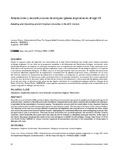Adaptaciones y reconstrucciones de antiguas iglesias anglicanas en el siglo XX

Ver/Abrir
Use este enlace para citar
http://hdl.handle.net/2183/26281
Excepto si se señala otra cosa, la licencia del ítem se describe como Atribución-NoComercial-CompartirIgual 4.0 España
Colecciones
Metadatos
Mostrar el registro completo del ítemTítulo
Adaptaciones y reconstrucciones de antiguas iglesias anglicanas en el siglo XXTítulo(s) alternativo(s)
Adapting and Rebuilding Ancient Anglican Churches in the 20th CenturyAutor(es)
Fecha
2020Cita bibliográfica
Grieco, Lorenzo. 2020. «Adaptaciones y reconstrucciones de antiguas iglesias anglicanas en el siglo XX». Actas de Arquitectura Religiosa Contemporánea 7: 26-35. https://doi.org/10.17979/aarc.2020.7.0.6288.
Resumen
[Resumen] Desde la segunda mitad del siglo XIX, los movimientos de la High Church británica han tenido como objetivo actualizar la liturgia anglicana. En los años de la posguerra, sensibles a las influencias del Movimiento Litúrgico continental, estas solicitudes litúrgicas se traducen en principios operativos para la organización del espacio eclesial. Estos principios se refieren tanto a la construcción de nuevas iglesias anglicanas como a la modernización de las antiguas iglesias con respecto a las nuevas necesidades litúrgicas. El último caso es el foco principal de esta comunicación. El objetivo del documento es conectar diferentes experiencias de adaptación y reconstrucción de iglesias anglicanas, antes y alrededor de los años del Concilio Vaticano II, destacando las influencias continentales y investigando un peculiar enfoque británico sobre las
ruinas arquitectónicas. El discurso se centra particularmente en un episodio simbólico, el concurso de la nueva catedral de Coventry, que alimentó la discusión sobre el valor de las ruinas en la restauración o reconstrucción de iglesias destruidas. A raíz de este tema, se introducen las obras de dos figuras relevantes en la arquitectura religiosa británica: George Gaze Pace (1915/75) y Robert Potter (1909/2010), cuyas iglesias representan un extraordinario ejemplo en la composición de un espacio sagrado en diálogo con las ruinas. [Abstract] Since the second half of the 19th century in Britain High Church movements has aimed at updating the Anglican liturgy. In the post-war years, sensitive to the influence of the continental Liturgical Movement, these requests are translated into operational principles for the organisation of ecclesial spaces. The principles concern both the construction of new Anglican churches and the modernisation of old churches with respect to new liturgical needs. The last case is the focus of this communication. The objective of the text is to connect different experiences of adaptation and reconstruction of Anglican churches, before and around the years of the Second Vatican Council, highlighting the continental influences and investigating a peculiar British approach to ruins in architecture. The study focuses particularly on a symbolic episode, the contest for the new Coventry Cathedral, which fuelled the discussion about the value of ruins in restoring or rebuilding destroyed churches. In the wake of this theme, the paper introduces the works of two relevant figures in British Church building: George Gaze Pace (1915/75) and Robert Potter (1909/2010), whose churches represent an extraordinary example in the composition of a holy space in dialogue with ruins.
Palabras clave
Adaptacion
Arquitectura anglicana
Reconstrucción
Arquitectura religiosa
Reino Unido
Adaptation
Anglican Architecture
Reconstruction
Religious Architecture
United Kingdom
Arquitectura anglicana
Reconstrucción
Arquitectura religiosa
Reino Unido
Adaptation
Anglican Architecture
Reconstruction
Religious Architecture
United Kingdom
Versión del editor
Derechos
Atribución-NoComercial-CompartirIgual 4.0 España
ISSN
2659-8671






